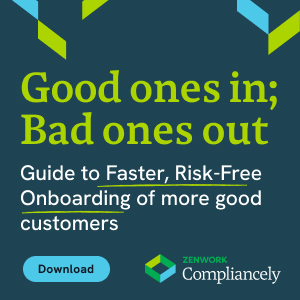What Is Death Master File & What Is Its Significance In Compliance?

As the trends in identity, crime make it clear that almost no one is safe from identity theft, businesses are having a hard time complying with the KYC processes and verifying the identities of their customers. This is not because of the lack of identity proof, but because of deepfakes and fraudulent identity claims.
Enterprise industries, such as insurance, banking, financing, lending, and more come across deepfakes and fraudulent profiles more often than you might assume. And this makes compliance checks not just a priority but a necessity.
Identity verification, a simple procedure of verifying the real identities of customer profiles, focuses exclusively on validating the identities, sources of the funding, and risk screening, which helps businesses prevent risk and approve more customer profiles confidently.
While the majority of the enterprise industries need a reliable compliance ecosystem; insurance companies, however, need a different approach to verification. You see, life insurance companies are legally bound to compensate the next of kin per the terms and conditions of the life insurance policy.
Now the conflict arises when social engineers or fraudulent profiles are claiming the identities of the deceased in order to claim the monetary benefits. And it’s not just in the insurance narrative, many government organizations in the recent past have reported that fraudulent profiles are stealing the identities of the deceased to gain access to certain financial benefits offered by the federal government.
Federal agencies, such as the IRS and Social Security Administration, are aware of these crimes. Intending to counter such irregularities, businesses are regulated and mandated to conduct certain compliance checks to verify identities.
Death Master File is one such identity verification check, which allows you to validate the identities of the deceased. Death Master File check allows you to prevent risk by helping you check if you are associated with someone who is claiming the identities of the deceased.
The following will discuss in detail the significance of the Death Master File and its various uses.
Death Master File: Verifying The Identities Of The Deceased
In one scenario, the Death Master File enables insurance agencies to verify the real identities of the deceased. Insurance companies, who traditionally depend on the social security records of the deceased, make sure that the death of the insured has been registered. They further need valid proof to transfer the insurance claim.
In other scenarios, businesses need to verify the deaths of their former employees to process certain benefits to the dependents of the deceased.
No matter the purpose, the identities of the deceased must be verified to prevent the misuse of the financial ecosystems.
Death Master File: Prevent Onboarding Fraudulent Profiles
While businesses focus on verifying the identities, the Death Master File must be included in the compliance protocol.
Here’s why.
Let’s say that a bank is onboarding a person named ‘X’. However, X is claiming the identities of the deceased in order to clear the KYC/AML verification and compliance checks. The process of claiming someone else’s identities are deemed fraud and banks simply don’t deal with fraudulent profiles.
When the banks search the identities against the Death Master File, the identities of the deceased will show up, preventing the bank from onboarding profiles that are claiming others’ identities.
So, a Death Master File enables financial institutions to protect themselves from high-risk profiles, fraud, deepfakes, and false negatives.
Death Master File: Validation With Authoritative Data Lists
The Death Master File is controlled and administered by the Social Security Administration. This, however, does not mean that every single death is recorded in the Death Master File. The Social Security Administration reiterates that it is recording the deaths as and when the records are submitted by the families or guardians of the deceased.
These records are made available after a thorough investigation, making the records highly authoritative and reliable. Enterprise industries can easily incorporate this check into their compliance protocols to ensure that there are no duplicated profiles and the identities are validated against authentic, government-authorized records.
Death Master File: Streamline Onboarding Processes
Death Master File is a critical compliance protocol, which allows businesses to onboard risk-free profiles. Identifying profiles with false identities is a major objective for any compliance protocol. Death Master File check enables businesses to not just verify the identities of the deceased but prevents onboarding profiles that pretend and fraudulently claim the identities of the deceased.
Simply put, the Death Master File prevents identity fraud.
Previously, validating the credibility of identities was a humungous task, but with modern compliance solutions, such as Compliancely, identity validation is easier to incorporate and effective.
Real-time Death Master File check from Compliancely enables businesses to check and verify the identities of the deceased in real-time. This means your DMF queries are met with the most accurate and reliable identity matches as and when registered and updated in the source records (Social Security Administration).
Death Master File: Smoother Account Opening Process
Businesses can verify, identify, and differentiate fraud profiles from credible ones easily with a Death Master File check.
A fraud profile will try to obtain and claim invalid or expired identities for a free pass through compliance protocols. However, stern checks such as the Death Master File enable businesses to tighten the compliance protocol and require the internal compliance teams to validate the identities against the authorized data lists of the Social Security Administration with valid proof.
This allows businesses to prevent identity fraud and onboard credible profiles, improving the overall quality of the profiles onboarded and enabling a compliant yet effective account opening process.
